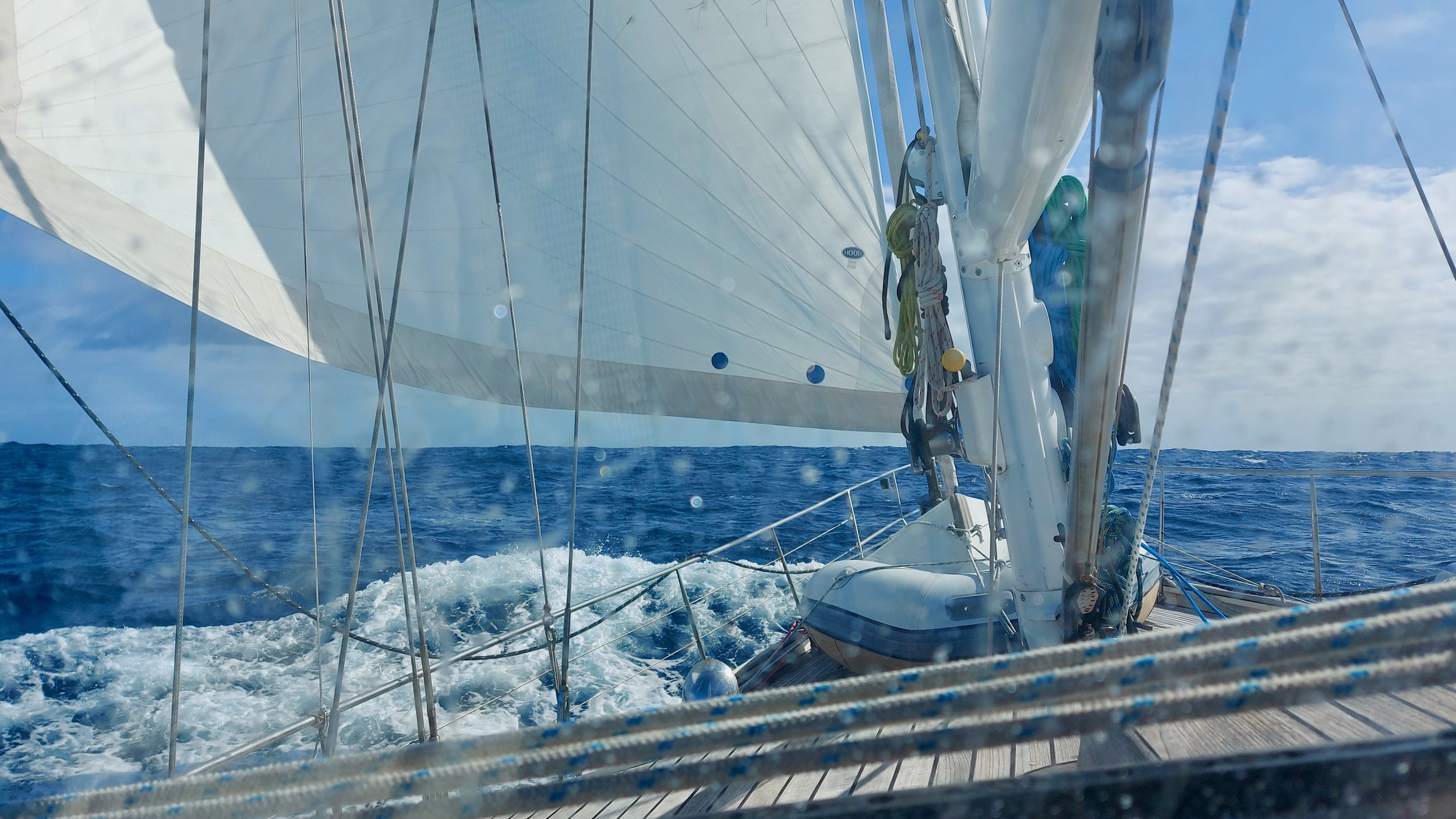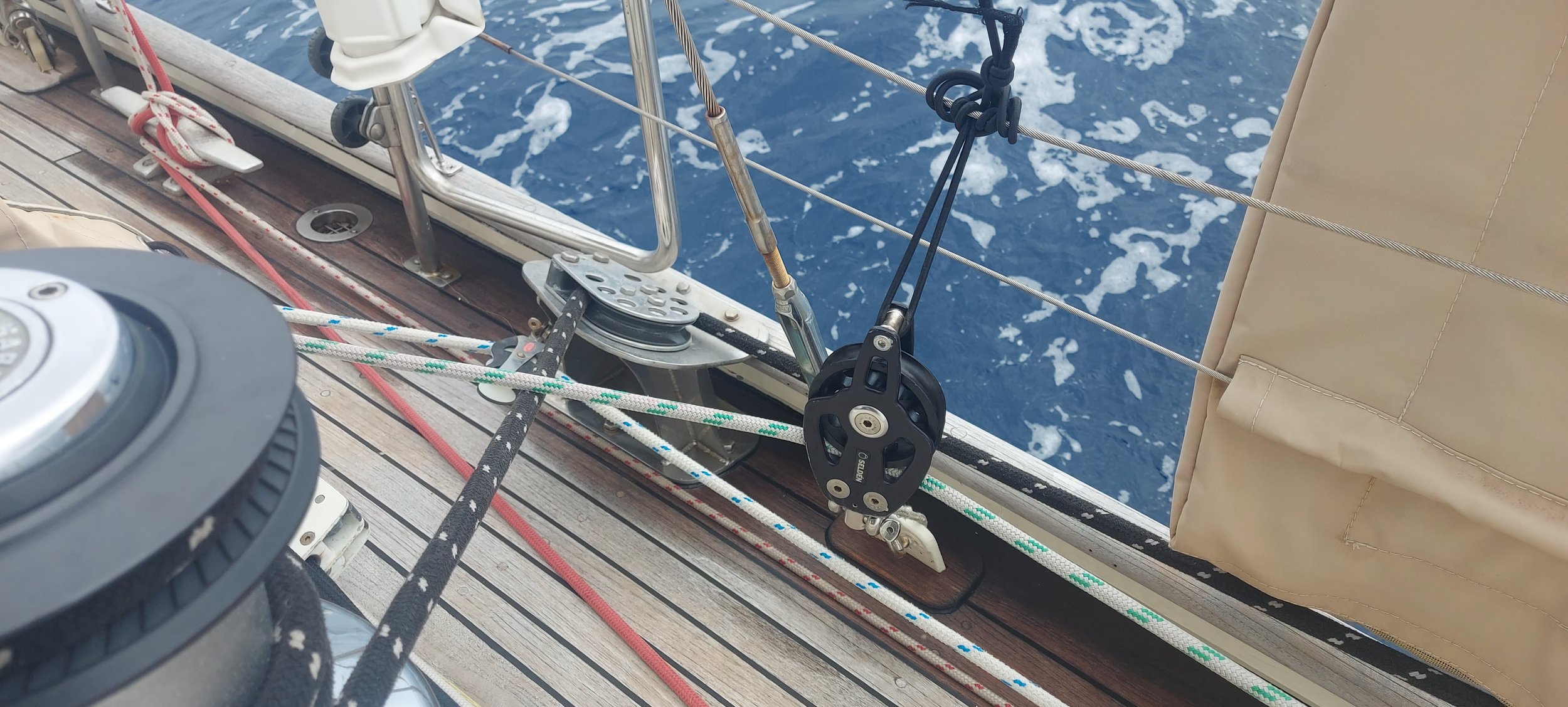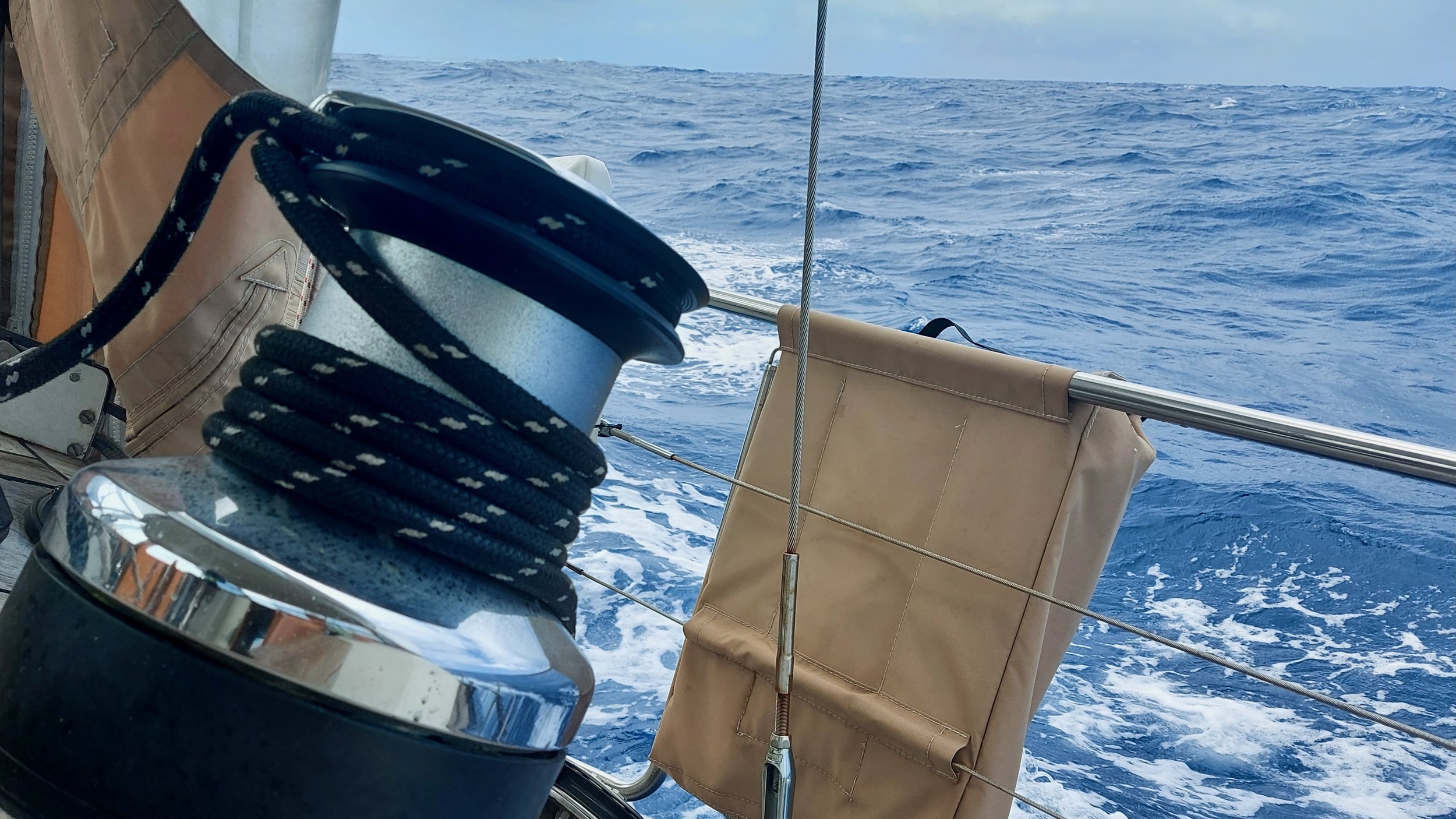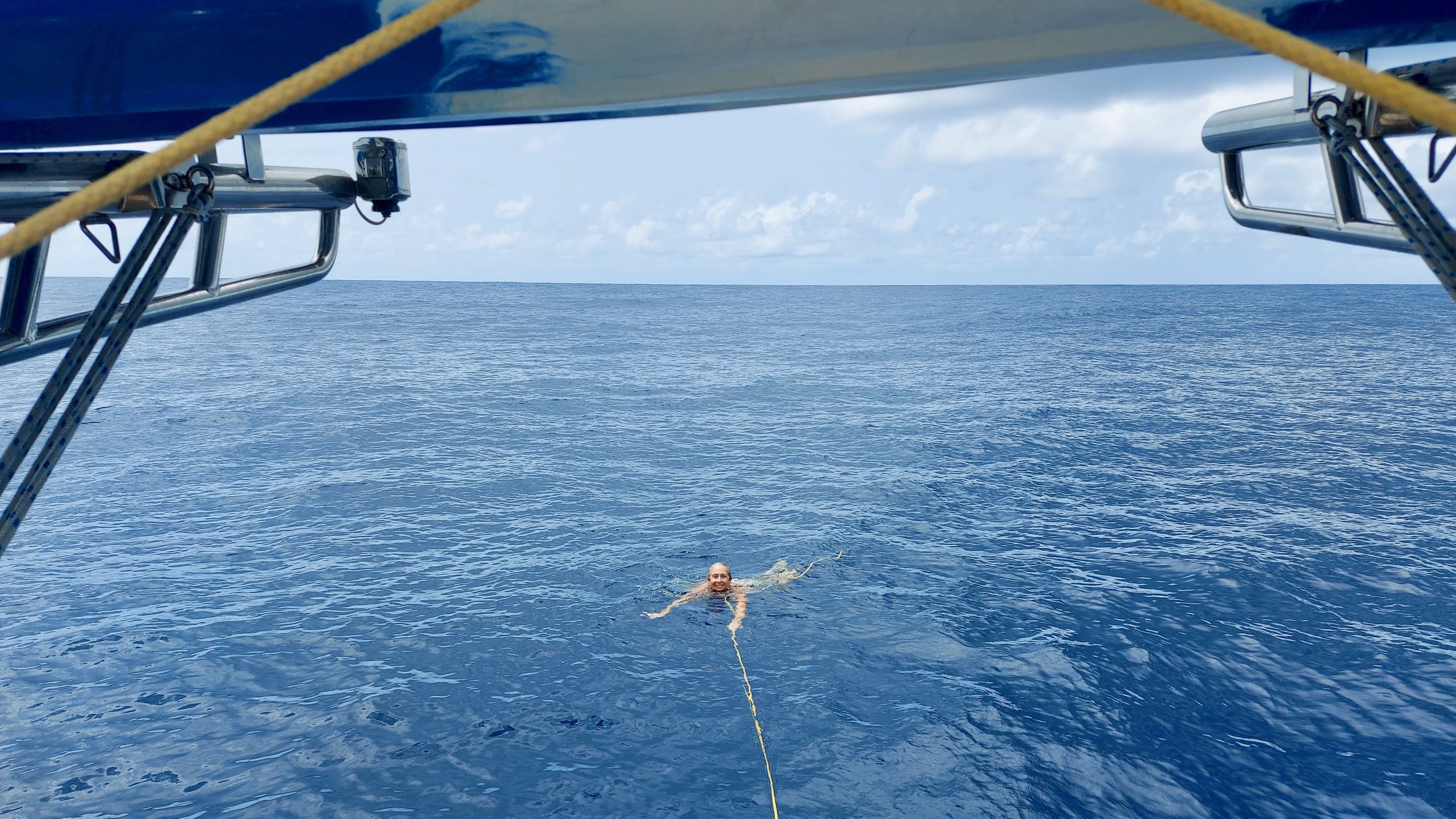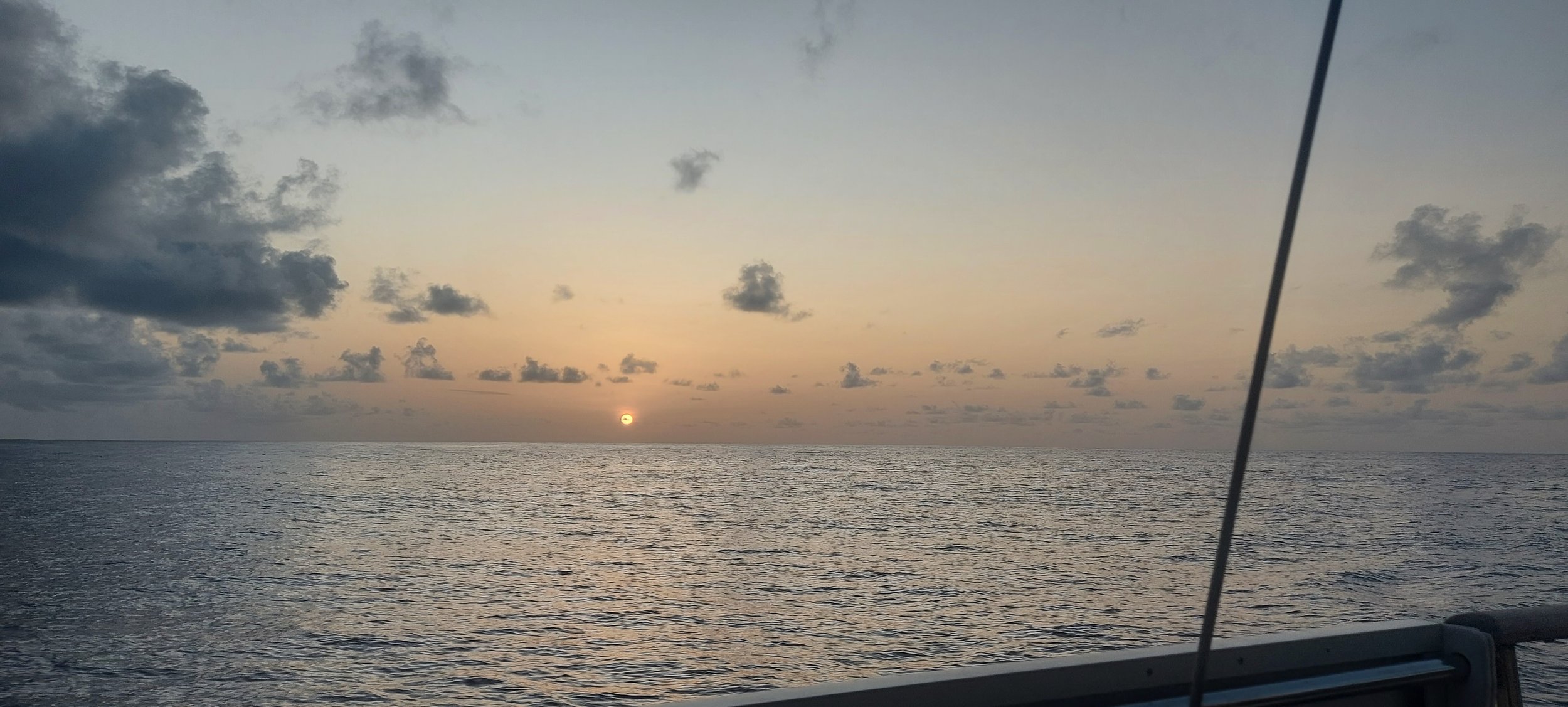Sailing into the Unknown
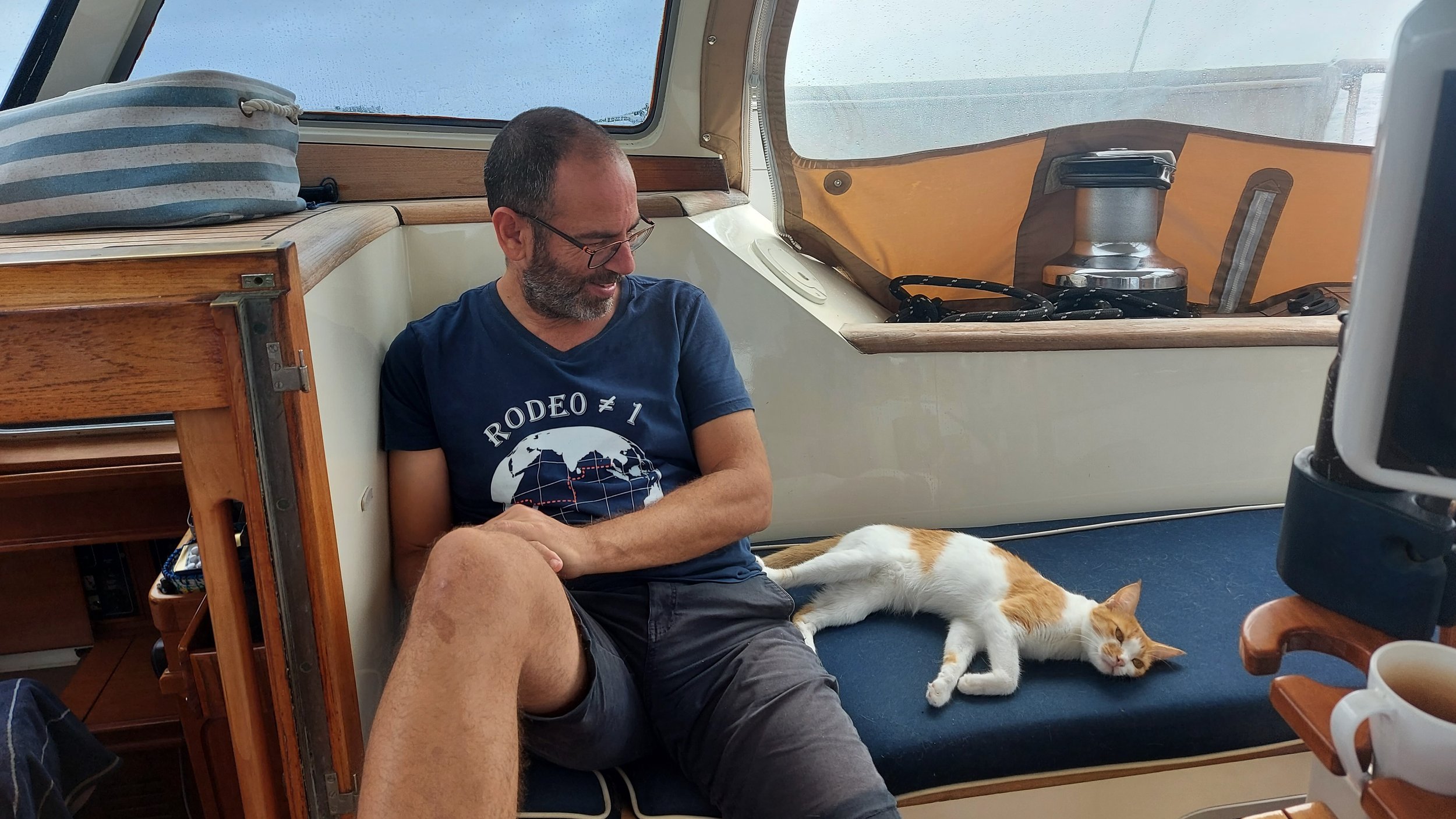
Day 11 : Ascension Island to Azores
Monday, March 28th 2022
IThe long beat has begun, and it’s been quite a positive start.
It was lovely to turn the engine off after 3 days of almost constant motoring, and certainly Coco was the happiest crew member on board.
The winds were relatively light for most of Day 11, at just 8-12 knots, and the sea state was slight, allowing us to ease into our new life on the lean.
With such light winds, we had full main, mizzen and genoa flying, and even then it wasn’t enough to always keep us powered up and the small waves were occasionally enough to stop us in our tracks. But that’s OK. We knew that the forecast was for the wind to build a little overnight to 15 knots or so, and that is indeed exactly what has happened, at which point our average speed went up to high 5s, and the power in the sails was enough to drive us through the waves, with less overall impact on our momentum from the bigger ones.
Given that comfort is our priority over speed for this phase of the passage, I’ve set up our chart plotter to give us a live reading of our Heel Angle.
15 Degrees is the target. Much less than that, and we ought to be carrying more canvas, as we’re giving away too much speed and pointing ability. Much more than that, and not only does it become much more physically waring just moving around on the boat, but we’re then in danger of being over canvassed when the gusts happen from time to time.
So there’s definitely a happy medium to be found, and at this stage, the long beat definitely feels doable. Not exactly fun, fun, fun – more something to be endured than enjoyed. But nothing too bad either.
In a few days’ time, we’ll have a 2-3 day spell of stronger winds and bigger waves, and it will be interesting to see if we can maintain the same equilibrium just by shortening sail, or if we will need to bear away by 5-10 degrees to let the boat keep powered up in the bigger waves. That will make things a bit more comfortable, of course, but will come at the expense of losing ground, which may turn out to be quite important.
One of the pleasant surprises so far in Phase 3 has been the course we’re able to sail. We set a target waypoint a few days ago at roughly 1730’ N, 2015’ W, some 800 nm from the end of the ITCZ, as what we’re calling our Cape Verde Decision point.
And at this stage, we appear to be able to lay that mark directly with no tacking at all, which is a very good thing indeed.
Between here and there, the weather and wind direction is very stable – it will be NE 15-25 knots the whole way, so it should take us around 6 or 7 days to get there if we don’t need to tack. But north of that point, we will be entering an area with a great deal of weather instability. And since we can only see 10 days ahead with our weather forecasting, its only as we get nearer that waypoint that we’ll have any sense of what awaits us between there and the Azores, some 1,200 miles further ahead.
Looking at the forecast for that area in the next 10 days gives some insight into the sheer range of conditions that could await us.
If we reached our waypoint tomorrow (we won’t, it will be in around 7 days), then the forecast says that next few hundred miles would be more of the same beating, then we’d have a few days of Azores High with no wind, and then some medium to strong Westerly winds to take us all the way into the Azores. That’s as good as it could get, and if that’s what it looks like in the forecast when we actually get to that waypoint, it’s a no brainer that we’ll press on.
Get to the waypoint a few days later, though, and we’d be straight into a huge area of high pressure and no wind, which would last for far longer than we would have the fuel range to motor through . But if we sat and waited, what comes after that is strong wind on the nose. That would mean sailing off at 60 degrees to the NW of the Azores, adding at least another 500 miles to the journey, and with no insight to what happens to the weather after that, as the 10 forecast runs out at that point. So, we’d have some serious doubts about pressing onwards if that’s what the forecast was saying when we get to the waypoint.
By contrast, if we had reached that waypoint just a few days ago, and we were now much further north, we’d be getting smashed by a huge depression which is producing a massive storm south of the Azores. If we see something like that ahead as we approach our waypoint, there’s absolutely no way we’d deliberately sail onwards and into that kind of weather.
So it really is a case of pot luck at this stage what the forecast will be saying as we approach the waypoint.
If we don’t like the look of things at that stage, we’ll have a couple of options. It may be that we just deliberately slow down, and if the conditions allow it, just keep inching forward, waiting for the right window to power up and get going.
But another, possibly more attractive option, would be to put a tack in and sail to the Cape Verde Islands. The waypoint is around 250 miles from there, or 2 days sail. I selected that particular spot as the decision point as a tack there in the NE winds would allow us to easily sail directly to Mindelo, which is the main marina in the northern group of islands. Plus 2 days seems like an acceptable amount of extra time to sail.
If we did make that call, there are numerous benefits, as we’ve discussed before - we can refuel, reprovision, have a break, and sit and wait for the perfect weather window to resume the journey.
It’s the same distance from the Waypoint or the Cape Verdes to the Azores - around 1,200 miles. Since we plan for 120 miles per day, that would make it a 10 day passage – exactly the length of visibility we get in the weather forecast.
It also means that we can define the “cost” of deciding to divert – at least 250 miles (or 2 days) more sailing, plus of course the time we spend in Mindelo catching our breath, setting up the boat and waiting for the next weather window.
I’d say the minimum in time it would cost us is 5 or 6 days, and if we wait for the perfect window, it could be many days more than that. And that’s all time subtracted from our stay in the Azores, as we have a fixed date to get to the UK by end of May.
Anyway, these are all decisions that are a week away. The question that was unknown before we started the beat was how achievable was it that we could sail directly to that waypoint – if we couldn’t, then our easy 2 days sail to Mindelo might actually end up being more like 4 or 5 days, changing the equation significantly.
And as I say, at this stage, since we are indeed able to head straight for it, it’s allowing us to relax, not stress too much about the unstable weather zone ahead, and just settle into life on the lean for the next 7 days, until we see what fate as in store for us as we approach the decision point.
Day 11 Statistics:
Time on passage so far: 10 days, 21 hours
Distance covered in last 24 hours: 118 nm
Average Speed in last 24 hours: 4.9 knots
Official Length of intended Route when we set out: 3,480 nm
Current Projected Distance to Go according to chart plotter: 2,088 (2,204) nm
Distance Sailed so Far: 1,301 nm
Total Projected Distance of Route: (2,088 + 1,301) 3,389 nm
Change in total projected distance in last 24 hours: -2 miles.
Time it takes on average to download a simple of view of the weather (one model, wind strength/direction only) between here, the decision waypoint, and the Azores, some 2,000 miles away: 45 minutes.

